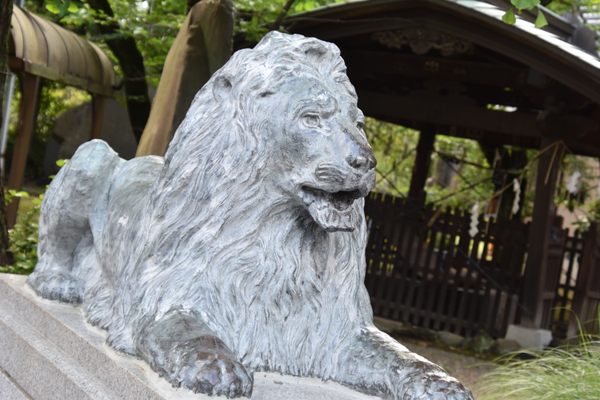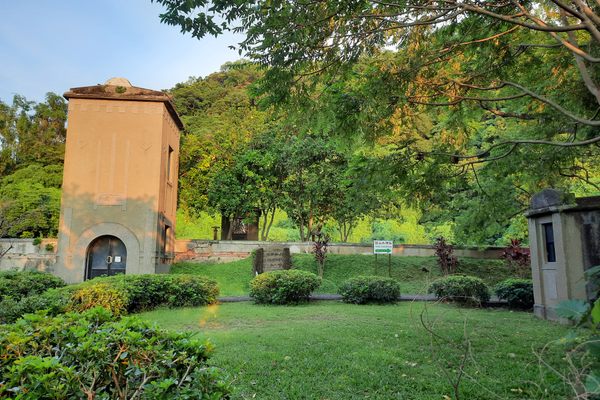About
In 1859, the Tokugawa shogunate finally put an end to Japan's centuries-long isolation, opening the Port of Yokohama to the rest of the world. Its redevelopment demanded the establishment of a red-light district catering to the locals and foreigners alike, meant to be a place for international social exchange.
Legend has it that the Ganki-rō ("stone turtle tower"), Yokohama's most opulent brothel, was home to a beautiful young courtesan named Kiyuu. Brought in from the infamous Yoshiwara pleasure district of Edo (Tokyo), it is said that she refused the company of a foreigner out of pride, writing a death poem before slitting her throat: Tsuyu wo dani / itou yamato no / ominaeshi / furu amerika ni / sode wa nurasaji. ("The eastern valerian of Japan, shunning even the dew; she shall not let the falling rain wet her sleeves.")
(Ominaeshi, the Japanese word for eastern valerian, can be literally translated to "prostitute flower;" amerika is a pun on "America" and ame "rain.")
While it has been pretty much debunked as a later fabrication, the story persists in the neighborhood where the Ganki-rō once stood, even inspiring a stage play in 1970. In real life, though, nothing much remains of Yokohama's red-light district and its extravagant brothels, except for a stone lantern preserved in Yokohama Park and a small, hidden shrine called Ganki Inari.
The shrine was indeed once part of the bordello, where the courtesans prayed to the fox god of Inari for good luck. After the whole red-light district was razed by a fire, an ordinary residential neighborhood sprouted on the site, eventually growing into the Ganki Yokochō shopping street.
Nestled between a house and a small, old-fashioned café on this quiet street stands a quaint, almost out-of-place wooden door, easy to miss were it not for the white shrine banners flapping in the wind. Beyond it, a short, narrow alley lies paved with pebbles leading to a dead end. It almost feels like trespassing into someone's yard, but then there it is: a small shrine adorned with red lanterns and fox figurines.
The shrine is well cared for by local shopkeepers, who together raise funds for its upkeep as well as for the annual festival held on 25 May every year, a tradition spanning generations. Though all but forgotten by the rest of Yokohama, the storied shrine is far from forsaken, keeping the community alive and well to this day.
Related Tags
Hidden Japan: Sado Island, Nara & Kyoto
Explore a different side of Japan.
Book NowCommunity Contributors
Added By
Published
September 20, 2023

























